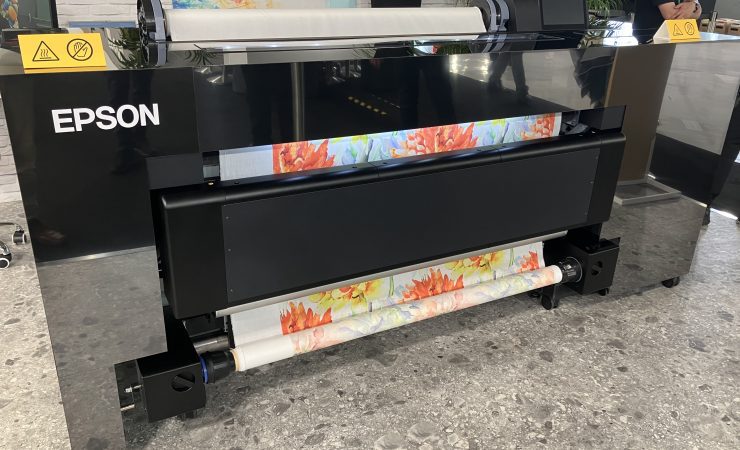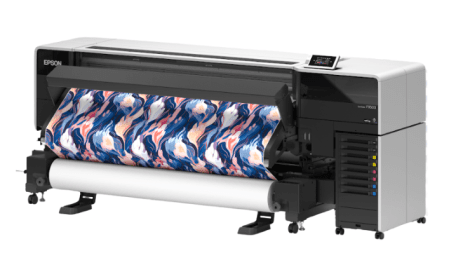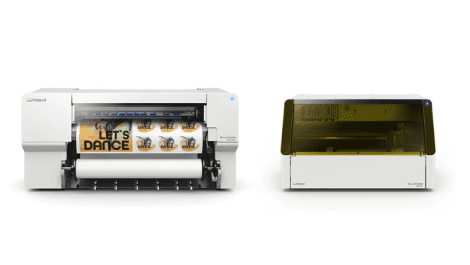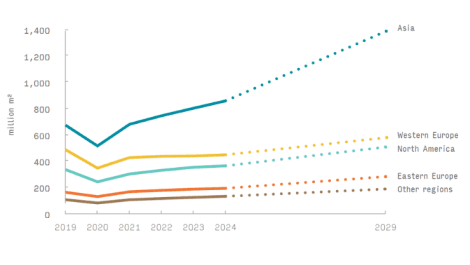Epson presented a range of updates and new models in its Monna Lisa range of industrial textile printers at ITMA, including a new hybrid unit that enables metallic and other textured effects, plus a preview of a ‘baby’ model that is hoped to extend the reach of the line into smaller printers and design houses.
The new hybrid unit is the Monna Lisa ML-1600/HY, which can digitally create a wide variety of sophisticated special effects for printed fabrics with gold, silver, and glossy tints, ranging from glossy lacquer through to gold and silver metal and opaque white. The printer offers eight colour channels, delivered via 16 Epson printheads, for the ‘regular’ printing of fabrics, plus an inline unit to add the special effects.
For users more interested in a wide colour range in ‘regular’ digital print and application flexibility, the Monna Lisa ML-24000 is the first to be equipped with 24 Epson PrecisionCore printheads and to offer 12 colours. The ML-24000 can print on all types of fabrics from natural, artificial, and synthetic fabrics through to the most innovative vegetable fibres. Thanks to the wide range of inks supported, its users can obtain any specific required certifications (such as GOTS or Oeko-Tex) very quickly and from the one machine.
The 8-printhead Monna Lisa ML-8000 is the first to be designed with the new Reacid configuration, a new capability that will be made available on all other printers in the series. This configuration adds a wide selection of other materials and fibres to the list of fabrics already supported, including non-traditional fibres, boosting the Monna Lisa range’s ability to adapt to a wide range of printing requirements, providing greater flexibility of use.
A 340cm width version of the top-of-the-range ML-32000 was also debuted. The increased width allows two rolls to be printed at the same time, increasing productivity and reducing energy and resource consumption. The width is particularly suitable for furnishing and home textile production, allowing even faster printing of curtains, bedspreads, furniture and decorative accessories.
A prototype ‘baby’ Monna Lisa was featured on the stand. With a print width of a little over a metre, the idea behind this is to being the range’s quality and Genesta inks into a self-contained unit for short-run production or sample-making environment, particularly with pigment inks that require less finishing. No commercial availability date or pricing was provided.
Epson’s DtG and SureColor F-series of dye sublimation and SC-series eco-solvent printers were also shown in a range of applications, including printing on artificial leather. A held mini spectrophotometer, the SD10, was also shown, able to sample colours from printed and other objects in order to provide measurement data for colour matching.




